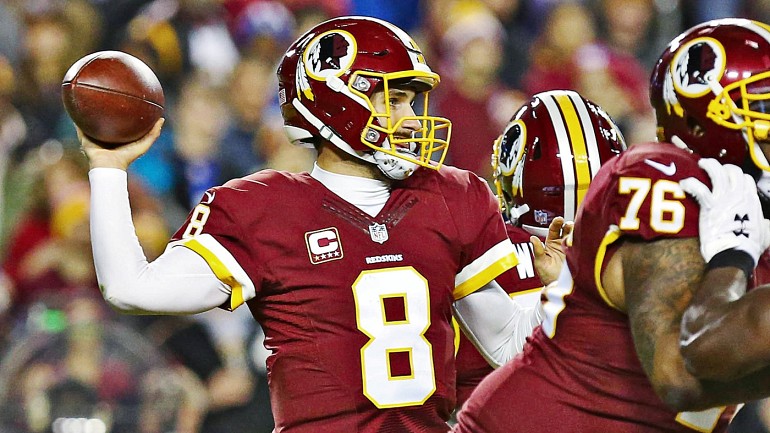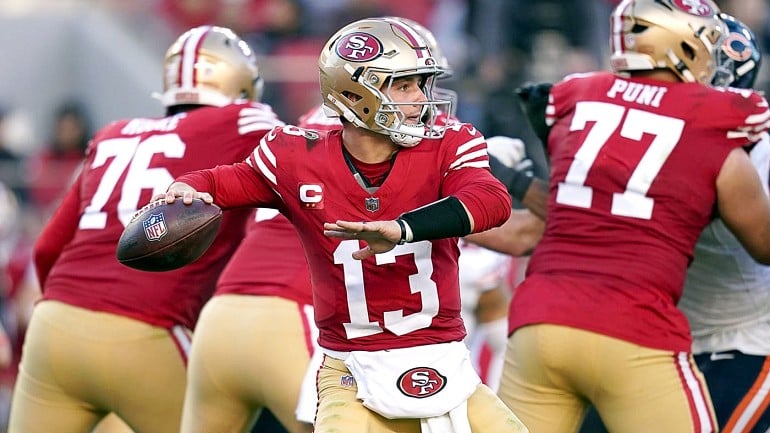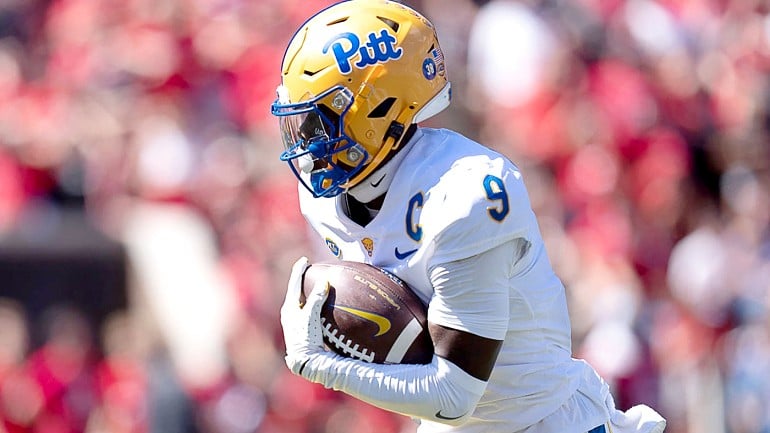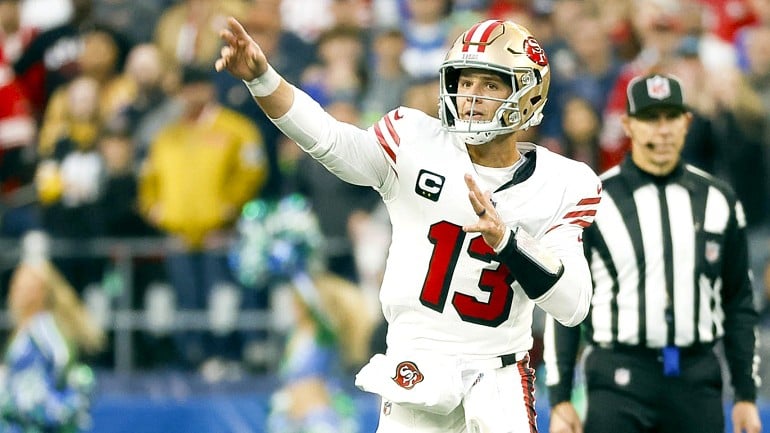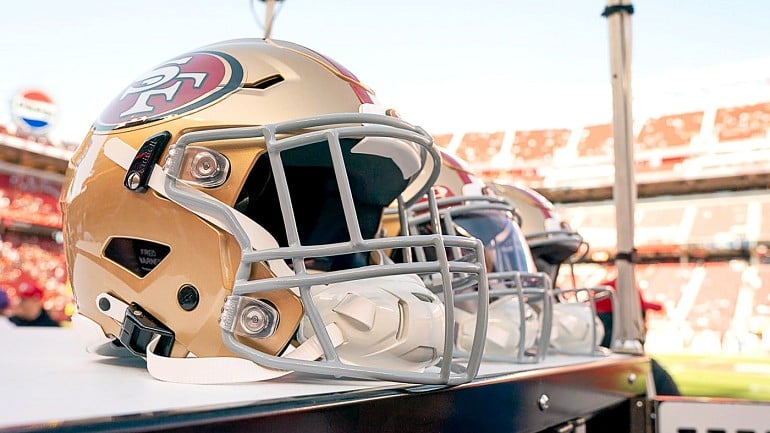Quarterback Kirk Cousins will likely be a free agent after the upcoming season, and may have his sights set on joining the San Francisco 49ers. Unfortunately, Cousins -- who will be 30 years old at the beginning of the 2018 season -- is still a developmental project who expects to be paid like a franchise quarterback.
This is the first installment of a two-part series analyzing Washington Redskins quarterback Kirk Cousins.
Cousins' Contract Status
When the Washington Redskins failed to sign quarterback Kirk Cousins to a long-term deal last week, their message to the quarterback was clear -- this will be Cousins' last year in a Redskins uniform. Now that Cousins signed his $23.9 million franchise tag, the Redskins are left with three options going forward: attempt to extend him after the 2017 season (unlikely), give him a non-exclusive $28.7 million transition tag in 2018 (unlikelier) or franchise him again in 2018 for $34.5 million (unlikeliest). The most likely scenario for the Redskins is to let Cousins walk after the 2017 season. In this scenario, the Redskins would receive a third-round compensatory pick in the 2019 draft, and Cousins would be free to become the highest-paid quarterback in the history of the NFL, at a potential $30 million per year.
Recent History of Franchise Free Agent Quarterbacks
Otherwise, the Redskins' options are limited. Their time to sign Cousins to a discounted deal has passed, and for the first time in recent memory, a potential franchise quarterback in the prime years of his career will likely be available on the free agent market. The Indianapolis Colts released Peyton Manning near the end of his career, although Manning was able to play three additional high-caliber seasons before his poor play and aging body forced him to retire. After the St. Louis Rams released Kurt Warner, Warner played six additional seasons with some success, but had a losing record over the remainder of his career. 27-year-old Drew Brees, who left the San Diego Chargers to become a superstar with the New Orleans Saints, is perhaps the best recent example of a serviceable quarterback who signed a free agent deal and became a future MVP candidate.
Since July is one of the quietest news months of the NFL year, the "Kirk Cousins to the 49ers" story has been a popular topic of conversation. It's easy to make the argument that the pair are a perfect fit. 49ers head coach Kyle Shanahan loves Cousins. The 49ers have more available cap space than any other team in the NFL. The 49ers need a franchise quarterback.
There's just one problem. Kirk Cousins is not a franchise quarterback -- at least not yet.
Cousins' Stats
That's not to say that Cousins' stats aren't impressive, as reported in a recent article by 49ers Webzone's Bret Rumbeck:
Nobody can discount the numbers Cousins put up over the last two seasons. He's thrown for just over 9,000 yards, tossed 54 touchdowns and completed 68.4 percent of his passes.
Cousins does throw for a lot of yards -- in 2016, his 4,917 passing yards and 8.1 yards-per-attempt average were the third best in the NFL. The stats say that Cousins is also generally efficient and accurate -- in 2016, his quarterback rating of 97.2 was the seventh highest in the league, and his 67.0-percent completion percentage was the NFL's eighth best. However, Cousins isn't at the top of the class in all quarterback metrics: in 2016, his touchdown percentage and interception percentage were average among starting NFL quarterbacks, and his nine fumbles were the fifth most among all QBs.
Throwing for a lot of yards is great, but getting the ball into the end zone is better -- there's a reason why the 2016 Redskins led the league in field goal attempts, but were just 15th in extra points -- and it's the same reason why the Redskins only won half of their games. The Washington Redskins -- and quarterback Kirk Cousins -- have a red zone problem. The Redskins have an elite offensive line, one of the NFL's best tight ends, two 1,000-yard wideouts, a top slot receiver and three serviceable running backs. So what's missing?
A franchise quarterback.
Cousins' Red Zone Problem
Solely based on his stats, Cousins appears to be a franchise -- bordering on elite -- quarterback on early downs, outside of the red zone. In 2016, his overall passing success rate (the "Hidden Game of Football" version, based on yardage, down and distance) was the fourth highest in the NFL on first and second downs, but a mediocre 10th best on third downs. However, Cousins' real problems began when he entered the red zone, where his success rate dropped to 29th in the league. Cousins' red zone quarterback rating was 24th in the league, due to a severe decrease in completion percentage; Cousins' 67.0-percent overall completion percentage fell to 45.8-percent in the red zone. Inside the 10-yard line, Cousins' 31.6-percent completion percentage was the worst in the NFL.
Why was Cousins so bad in the red zone? In order to answer this question, we first need a better understanding of who Cousins is as a quarterback, and how the Redskins utilize him outside of the red zone -- and to do that, I analyzed all of his 2016 game film. Cousins is obviously a talented player with many qualities a general manager looks for in a starting quarterback. Cousins doesn't have an elite arm, but he has enough arm strength to throw the ball deep, and he shows excellent accuracy on deep passes when he throws from a solid base. When unpressured, Cousins has the proper velocity and accuracy on his intermediate passes; incompletions are usually caused by either poor decision-making or pressure from the defense. Even though Cousins throws a high percentage of short passes, his accuracy on these shorter throws is often lacking, especially when he's forced to rush the throw. And although Cousins does not navigate the pocket exceptionally well, he is rarely sacked, thanks to his elite offensive line and his propensity to throw passes away at the first sign of pressure.
The Redskins' Offensive Scheme
At their respective NFL Combines, Cousins' top three 2016 receivers ran 40-yard times in the 4.3s and 4.4s, and his second tight end -- Vernon Davis -- once ran in the 4.3s himself. The Redskins' speed at the receiver position provided Cousins with deep threats on the vast majority of passing plays. With fast receivers running deep routes, the Redskins implemented a variety of vertical stretch concepts, and with opposing safeties pushed back, easier matchups were created for receivers running intermediate routes. The Redskins paired these concepts with the play-action pass with great success. With defenses concerned with the deep ball as well as the run, tight end Jordan Reed was often left relatively uncovered for a player of his caliber, and provided a consistent outlet for Cousins. Cousins threw a large percentage of his passes near the line of scrimmage, but his yards-per-attempt average was bolstered by a number of deep passes, and his receivers adding yardage after the catch.
Stretching the field vertically is a priority for every good team, but even more so for the Redskins, because Cousins lacks the ability to properly assess the entire field. The Redskins regularly used route concepts that allowed Cousins to focus on a limited area of the field in order to minimize the mistakes in his route progressions.
Cousins Needs to Win Pre-Snap
The majority of Cousins' impressive passes -- and there were many in 2016 -- were throws to Cousins' first read, from a clean pocket. Cousins was extremely successful on passing plays that were designed to be thrown to a specific receiver -- provided that the receiver was open -- and he had limited success on plays that required improvisation.
When Cousins was able to predict the defensive coverage, he consistently hit his first read quickly and with great accuracy -- for example, when linebackers bit on a play-action fake, by the time Cousins hit the back of his drop, the ball was out of his hands and on its way to a receiver down the seam. However, when Cousins had to wait for his first read to work his way open, Cousins often stared down the receiver, which -- as expected -- often got him into trouble. Cousins rarely effectively looked off safeties or zone defenders -- and although it was obvious that he made more of an attempt in the latter part of the season, he was rarely successful moving defenders with his eyes.
Pre-Snap Decisions
Since Cousins was much more comfortable -- and successful -- throwing to his first read, he sometimes fell into the trap of predetermining where he would throw the ball prior to the snap. He made this mistake surprisingly often on third down and short, where he ignored open receivers beyond the sticks in order to throw passes to well-covered receivers deep down the field.
Route Progression and Telegraphing Passes
When Cousins knew where he wanted to go pre-snap -- and the defense reacted the way he expected -- Cousins was one of the most dangerous quarterbacks in the NFL. Cousins needed only a split second to recognize that his first read was open before delivering the pass on target.
But what happened when Cousins' first read wasn't immediately open? Thanks to the Redskins' offensive line, Cousins usually had the time to wait for his receiver to find a hole in the defensive coverage, allowing Cousins to deliver an accurate pass. However, when his first read was covered, Cousins was forced to go through his route progressions. Although Cousins went through his progressions slower than you would expect for a "franchise quarterback," the larger problem was the way he progressed through his receivers. Instead of using just his eyes to scan the field, he moved his entire head, allowing defenders to easily identify his intended target. Then, once he chose his target, Cousins stared down the receiver and took an abnormally long time to assess the speed of the receiver in order to determine the exact location to throw the ball. If Cousins didn't take the extended time to assess the receiver, his passes were usually well off the mark.
The combination of Cousins' limited field of vision and his propensity to telegraph passes caused additional problems for the Redskins' signal caller. Savvy zone defenders who realized Cousins' limitations keyed on the quarterback and ignored receivers running through their area in order to break on receivers who were more likely to receive the pass. Even when Cousins properly read a defense, defenders were often not where they were "supposed to be" as the offensive play was designed. This lead to Cousins throwing passes into the hands of defenders even when throwing from a clean pocket -- but the Redskins' real problems began when Cousins was subjected to quarterback pressure.
Operating Under Pressure
Cousins doesn't deal well with quarterback pressure. As stated earlier, he is rarely sacked, but few quarterbacks are quicker to throw passes out of bounds at the first sign of trouble.
To combat this deficiency, the Redskins regularly provided Cousins with at least one outlet option in case he was unable to find an open receiver. However, if Cousins faced immediate pressure, he often threw to an outlet receiver without first looking to see if the receiver was covered. Sometimes the receiver was blanketed, but even if he had a step on his defender, another defender who left his primary coverage area often stepped in front of the receiver to make a play on the ball. Luckily for Cousins, many passes were dropped by defenders, otherwise Cousins could have easily led the league in interceptions.
Additional Factors
Cousins is very streaky. One game, he's nearly unstoppable with multiple 50-yard touchdown passes, and the next, he's unable to complete simple third down passes. Cousins is also not a proven winner in the NFL. Cousins has an overall losing record while playing on a number of respectable teams, yet 49ers quarterback Brian Hoyer -- who started over Cousins in college at Michigan State -- has an overall winning record in the NFL while playing on some of the worst teams in the league.
Why Does Cousins have a Red Zone Problem?
Cousins has a red zone problem because the shorter field limits Cousins' strengths, and accentuates his weaknesses. Vertical stretch plays are less effective in the red zone because there is less vertical field to stretch. Safeties play closer to the line of scrimmage, which shortens the distance between the linebackers and safeties on play-action passes.
Against condensed red zone defenses, Cousins' first reads were less likely to be open, and his passing windows were smaller. Since Cousins often only worked one portion of the field, this limited the number of available receivers, and allowed defenders to cheat towards those receivers. In addition, Cousins also throws a subpar fade route. Due to his recent effort to limit red zone interceptions, Cousins was more conservative as he neared the end zone. Cousins decided against throwing passes into tight windows that he would otherwise test in other areas of the field. Instead, Cousins often chose to throw balls away, which took a toll on his completion percentage. And all of these factors took their toll on the Redskins' chances of scoring touchdowns.
Can Cousins Become a Franchise Quarterback?
Although the majority of this piece is a summary of his limitations as a quarterback, there is a lot to like about Kirk Cousins -- but not at his estimated asking price. He is not currently an elite or franchise quarterback, but he is a serviceable starting NFL quarterback who has many positive traits that allow him to excel in the right scheme, provided he is surrounded by the right talent. Cousins isn't going to make a bad team good, but he could make a good team better. And although he isn't young, he has only 41 career NFL starts, so he certainly has the ability to grow with added experience. This upcoming season -- with the Redskins' changes at the wide receiver position -- will be a true test for Cousins and his development as a QB.
Do you think Kirk Cousins can become a franchise quarterback? Is Shanahan the "quarterback whisperer" that Cousins needs in order to become a franchise QB? In the second installment of this two-part series, we'll let you be the judge, as we bring you the good, the bad and the ugly of Cousins' 2016 game film.
